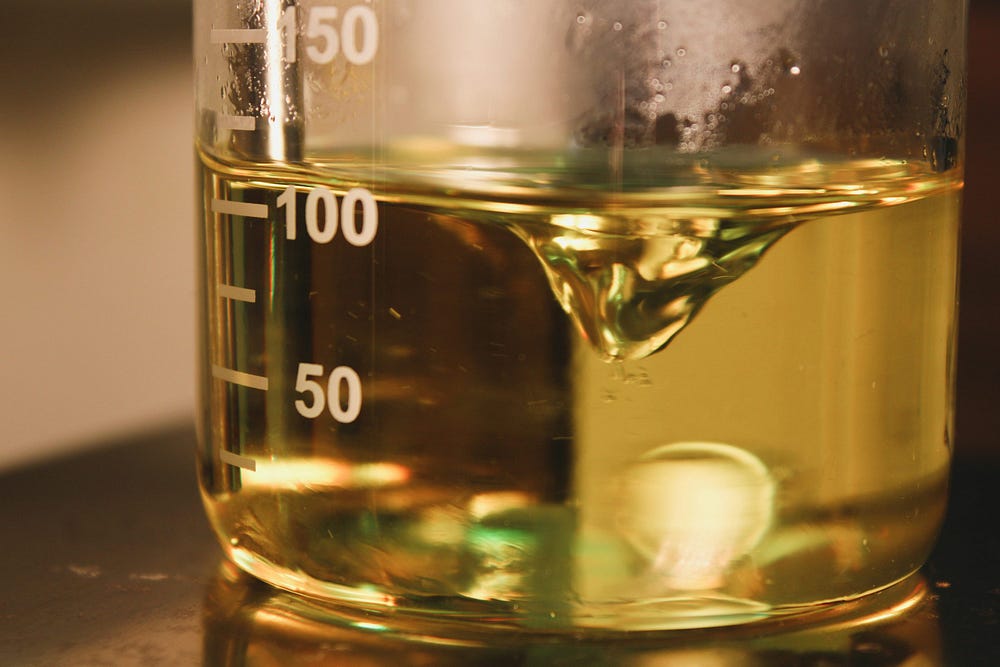Let’s discuss the World’s three Strongest AcidsEspecially used in labs

An acid is a molecule or ion that has the capability of donating a proton and forming a covalent bond. When acids dissolve in water, they produce a sour taste. When acids are chemically detected with specific indicators, they yield specific colors as a result. When an acid reacts with a metal, it liberates hydrogen gas, and when it reacts with a base, it forms salts. Acidic solutions have a pH value of less than 7. Common examples of acids include hydrochloric acid, sulfuric acid, citric acid, nitric acid, and acetic acid.
There are mainly two types of acids: strong acids and weak acids. Strong acids ionize almost completely in water, whereas weak acids do not.
Let’s look at the three strongest acids in the world.
Piranha Solution
Piranha solution (H2SO5) is a powerful and highly reactive cleaning mixture made by combining concentrated sulfuric acid (H2SO4) and hydrogen peroxide (H2O2). It typically consists of a 3:1 mixture of sulfuric acid to 30% hydrogen peroxide. Another name for this solution is Piranha etch. The name is derived from the piranha fish, known for its aggressive feeding habits, as this solution rapidly dissolves and consumes organic materials through vigorous chemical reactions.
Piranha solution is primarily used to remove organic residues from surfaces, especially in laboratory settings. It decomposes organic matter and hydrates it, making the solution highly hydrophilic. Due to this property, it can easily dissolve fabrics and skin, potentially causing severe damage and chemical burns in the event of inadvertent contact. It is extremely dangerous if mixed improperly or with the wrong substances.
Nitric Acid
Nitric acid has the chemical formula HNO3. It is a strong, corrosive acid commonly used in fertilizers, explosives, and chemical manufacturing. It can dissolve metals and release toxic fumes. In its pure form, nitric acid is colorless, but it often appears yellow due to decomposition.
This acid is highly strong because it completely ionizes in water. It is a common reagent used in various chemical reactions and experiments in science laboratories. Nitric acid is utilized in metal refining, etching, and various cleaning processes. It is widely used in the production of dyes, pharmaceuticals, and a number of chemicals.
Due to its high corrosiveness, nitric acid can cause severe burns and tissue damage. Accidental inhalation can lead to dangerous respiratory issues. Additionally, this acid reacts violently with flammable materials.
Sulphuric Acid
Sulfuric acid has the chemical formula H₂SO₄. It is a powerful acid commonly used in batteries, various industries, and chemical reactions. This substance is highly corrosive, especially when mixed with water or other chemicals, and it appears as a colorless, odorless liquid.
As a strong acid, sulfuric acid readily dissociates into ions in solution. It plays a crucial role in the production of phosphate fertilizers used in agricultural land. Additionally, it acts as a catalyst in various chemical reactions and is involved in the manufacturing of explosives, glue, wood preservatives, automobile batteries, detergents, and more.
Furthermore, sulfuric acid is essential in the refining of petroleum. It is also used for metal cleaning, a process known as pickling, as well as in copper smelting and electroplating applications.
All three substances are hazardous and require careful handling to ensure safety. Anyone working with them must receive comprehensive training on the specific risks associated with each material. Additionally, proper safety gear, including gloves, goggles, and respirators, must be worn at all times to minimize exposure and prevent accidents. Implementing these safety measures is crucial in maintaining a safe working environment.
Comments
Post a Comment
Please do not enter any spam link in the comment box.